Fender benders happen. And, it turns out, many of them happen the same way.
While it’s always essential to take precautions behind the wheel, being extra aware of these common collisions could help you avoid them in the first place.
So here’s a breakdown of four of the most common types of collisions, according to the Insurance Institute for Highway Safety (IIHS), with driving tips to help you steer clear of trouble while out on the road.
Front-Impact Collisions
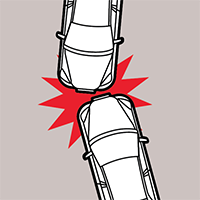 What They Are
What They Are
Front-impact collisions—when the front end of a vehicle hits another vehicle or something on the side of the road, like a tree or telephone pole—accounted for 57 percent of serious crashes in 2019, according to the IIHS.
How To Avoid Them
Front-impact crashes are often caused by slippery roads or other weather-related factors, so it’s important to adjust your driving to fit the conditions, says Russ Rader, IIHS’s senior vice president of communications. Translation: Drive slower in rain and snow, to give yourself more time to react if your car suddenly loses control. And avoid anything that could divert your attention from the road. “Stay off the cell phone, of course, but fiddling with the radio or even talking to a passenger can be a distraction,” says Rader. “Remain focused on the task at hand.” (See more surprising causes of distracted driving.)
Lane-keeping systems also help reduce the frequency of front-impact collisions, according to the IIHS. This feature alerts the driver or even automatically steers a car if it ventures outside of its lane.
Side-Impact Collisions
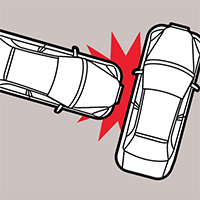 What They Are
What They Are
Side-impact collisions can be either a classic “T-bone” or a sideswipe. The former often occurs at intersections, usually as the result of some sort of confusion regarding which vehicle has the right of way. Sideswipes usually involve a side impact between cars driving parallel to one another in different lanes. According to the IIHS, 23 percent of serious crashes in 2019 were side-impact ones.
How To Avoid Them
Time-tested defensive-driving techniques can go a long way toward reducing your risk. To guard against the classic “T-bone,” be extra vigilant, and always look both ways at stop signs and stoplights—don’t speed to try to catch the yellow light. “When you’re late, you’re more likely to push it and run a red light,” says Rader. To help avoid a sideswipe, always check your blind spot before changing lanes and, when passing cars, be alert for other drivers changing lanes unexpectedly.
Rear-End Collisions
 What They Are
What They Are
Motorists are prone to rear-end collisions in heavy commuter traffic on highways and thoroughfares. The most common causes are driving too fast or too aggressively, or failing to leave sufficient space between you and the vehicle in front of you, according to Rader.
How To Avoid Them
Watch your speed and give yourself plenty of distance, in case the driver ahead suddenly slams on the brakes. To avoid being rear-ended by tailgaters, slow down, move to the right lane if it’s safe to do so, and calmly let them pass. Today’s automatic braking technology can also help keep you safe. Forward-collision warning systems—which provide audible tones or visual alerts to help the driver swerve or brake before a collision occurs—can reduce rear-impact crashes.
Parking Lot Collisions
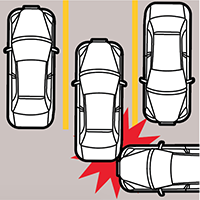 What They Are
What They Are
Dented bumpers are all too common in busy parking lots. They may happen when a car is backing out of a parking spot or where there are multiple cars moving in different directions.
How To Avoid Them
“In parking lots, it can be really difficult to see around you—especially when backing up,” says Rader. His advice: Take a moment to check out your surroundings before getting in the car to pull out of a parking space. If you can, park in a spot farther away from other cars. And if your vehicle has a rearview camera, that’s great—but don’t rely on technology alone to keep your ride scratch-free. “The image on the screen can be distorted by bright sunlight or shadows,” says Rader. “Always use your mirrors as well.”
If you’re ever in an accident (and we hope you never will be), you can have peace of mind knowing your GEICO auto insurance makes the claim process as smooth and painless as possible. You can report and track your claim online, over the phone or via the GEICO Mobile app—whichever is easiest for you. Plus, find out how GEICO’s convenient Auto Repair Xpress® program makes the process as simple as 1, 2, 3!
Read More: Lane-keeping and automatic braking aren’t the only safety innovations. Check out these 5 hi-tech safety features that could soon be standard.
By Rod O’Connor

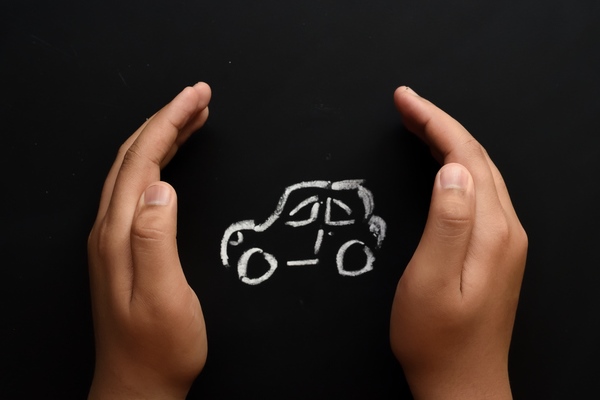


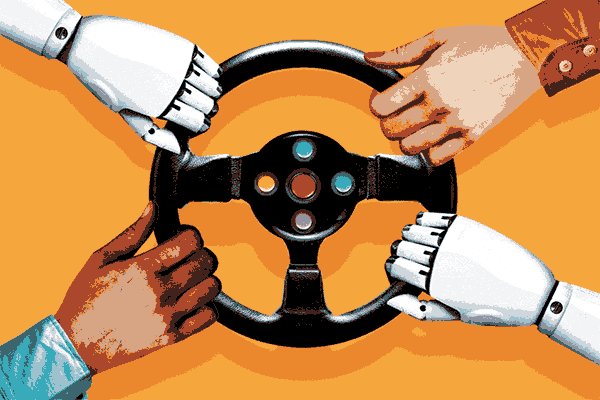
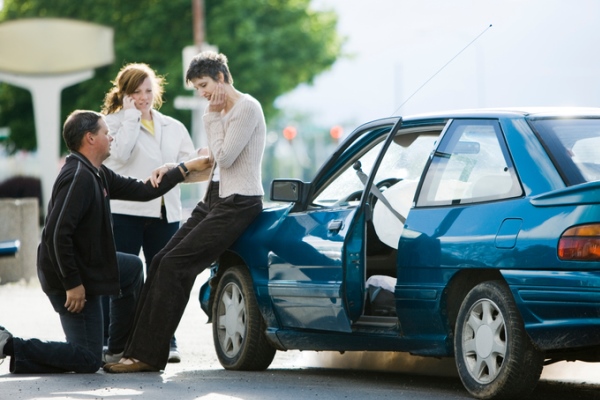
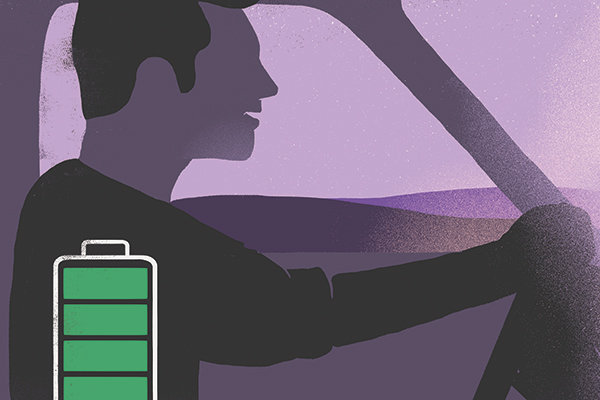


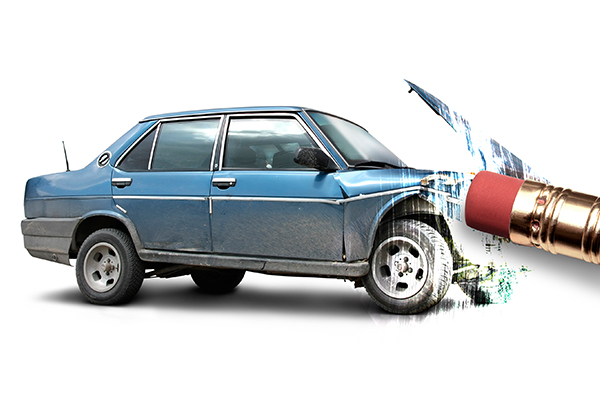
Pamela Rosborough says,
Very good.
Daniel Campbell says,
Thank you this is great you can’t be to safe good tips
Santo Rosario says,
Very good advices
Than you
William Deutermann says,
In parking lots, the burden of crash avoidance should logically fall on the pedestrian or driver passing behind a vehicle backing up. The backing driver should be extra vigilant, of course, but it is obvious that a person moving forward has a far better view of the situation than one moving backwards.
Chris Eddy says,
Personally I back into my parking spots. With cars and their back up radar screens its easier now to do so. This also avoids backing out where so many these days are so selfish and will just assume they will have the right away and never give you a proper chance to back out.
Gary Bercu says,
Your discount on safe driving due to taking the safe driving course, has helped me become a more mindful, on the road and a safer driver.. It’s a great idea to give us periodic safety tips. and thank you GEICO, refreshing our memories with reminding us how to cut down our chances of having collisions..
kenneth halloran says,
Very sound and pratical tips. This will be helpful.
Joan Sibbald says,
Thank you.
Sylvia carlisle says,
Good advice but in parking lots it’s not always the vehicle backing up sometimes that driver is being very cautious and then someone rips into the lane and rudely whips around you and you are already half way out of your spot. Common curtesy goes a long way.
Elbert Jackson says,
Reccomend prior driving your vehicle from park to drive, get your mind right. Mentally focus as if you are taking the driving examination to get your driver’s license…Many of us have been driving for some time and over time forget the fundamentals of driving. Always maintain your awareness of both drivers and pedestrians on the road. Maintain a good stopping distance between you and the vehicle in front of you. I’m speaking from experience, my driving record has not always been good, but I took my own advice and it’s worked to my advantage.
Felipe says,
These are facts about driving
If we all follow these examples there will be much less accidents
Lol we might not need insurance .
But not all follow the guid lines .
E Doss says,
Thanks
grace a. ramirez says,
I completely agree traffic here is sort of crazy so you have to stay alert and watch around before turning or changing lanes like a lot od people I see daily.
thank you. Always keep a distance to brake when needed.
Lisa Smith says,
I totally agree with Karen! ALWAYS keep your mind fresh on tips to stay safe.
Karen Bergeron says,
Thank you so much for this wonderful advice. We need to be reminded of these safety tips periodically.
Antonio Gonzalez says,
Very valuable advice.
Thank you